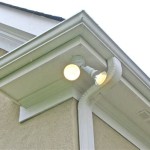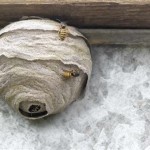How To Waterproof Indoor Wood Furniture For Outdoor Use
Many individuals find themselves in a situation where they wish to utilize indoor wood furniture in an outdoor setting. Whether it's a stylish coffee table, a comfortable chair, or a decorative chest, the temptation to repurpose interior pieces for patio or garden use is understandable. However, indoor furniture is typically not designed to withstand the harsh realities of outdoor environments. Constant exposure to sunlight, rain, fluctuating temperatures, and humidity can quickly degrade the wood, leading to warping, cracking, rot, and eventual decay. Therefore, proper waterproofing is crucial if one intends to extend the lifespan of indoor wood furniture in an outdoor setting. This article will detail the process of effectively waterproofing indoor wood furniture for outdoor use.
Before embarking on the waterproofing project, it is paramount to assess the type of wood used in the furniture's construction. Some wood species are naturally more resistant to moisture and decay than others. For instance, hardwoods like teak, cedar, and redwood possess natural oils and properties that make them inherently more durable against the elements. Softwoods, such as pine and fir, are generally more susceptible to water damage and require more extensive preparation and protection. Identifying the wood type will inform the choice of appropriate waterproofing methods and products.
Furthermore, examine the existing finish on the furniture. If the furniture has already been sealed, painted, or varnished, the surface must be properly prepared to ensure optimal adhesion of the waterproofing products. Removal of the existing finish may be necessary, depending on its condition and compatibility with the intended waterproofing treatment. A thorough cleaning is also essential to remove dirt, grease, and other contaminants that could impede the waterproofing process.
Preparation is Key: Cleaning and Sanding
The first step in preparing indoor wood furniture for outdoor use is a thorough cleaning. Use a mild detergent and water solution to scrub the furniture's surface, removing any dirt, grime, or debris. For stubborn stains or mildew, a specialized wood cleaner may be required. Ensure that all cleaning agents are thoroughly rinsed off and allow the furniture to dry completely before proceeding. A pressure washer can be used, but exercise caution to avoid damaging the wood, as excessive pressure can cause splintering or gouging. If using a pressure washer, maintain a safe distance and use a wide-angle nozzle.
Once the furniture is clean and dry, sanding is the next crucial step. Sanding removes any existing imperfections, creates a smooth surface, and allows the waterproofing products to properly adhere to the wood. Start with a coarser grit sandpaper (e.g., 80-grit) to remove any old paint or varnish and smooth out rough patches. Gradually move to finer grits (e.g., 120-grit, then 220-grit) to achieve a consistently smooth finish. Sand in the direction of the wood grain to avoid scratching or damaging the surface. After sanding, thoroughly remove all sanding dust with a tack cloth or vacuum cleaner. Dust particles can interfere with the adhesion of the waterproofing products and compromise the final result.
For furniture with intricate details or hard-to-reach areas, consider using a sanding sponge or a detail sander. These tools allow for more precise sanding without damaging the surrounding areas. Pay particular attention to edges, corners, and joints, as these areas are often more susceptible to moisture damage. The goal is to create a clean, smooth, and even surface that is ready to receive the waterproofing treatment.
Choosing the Right Waterproofing Product
Selecting the appropriate waterproofing product is pivotal for protecting indoor wood furniture from the elements. Several options are available, each with its own advantages and disadvantages. The choice will depend on factors such as the type of wood, the desired level of protection, and the final aesthetic appearance. Common waterproofing products include penetrating oil finishes, marine varnishes, epoxy resins, and wood sealants.
Penetrating oil finishes, such as teak oil or linseed oil, are designed to soak into the wood fibers, providing protection from within. These finishes enhance the wood's natural beauty and offer a relatively easy application process. However, they typically require regular reapplication, as they are not as durable as other waterproofing options. Marine varnishes are specifically formulated for use on boats and other marine applications, offering exceptional water resistance and UV protection. These varnishes create a hard, durable coating that shields the wood from the elements. However, they can be more challenging to apply and may require multiple coats for optimal protection.
Epoxy resins provide a highly durable and waterproof barrier, making them an excellent choice for furniture that will be exposed to harsh conditions. Epoxy resins are typically applied in two parts, which, when mixed, create a strong and resilient coating. However, they can be more expensive and require careful application to avoid air bubbles and imperfections. Wood sealants are designed to penetrate the wood and create a water-repellent barrier. These sealants are available in various formulations, including water-based and oil-based options. They are relatively easy to apply and offer good protection against moisture, but may not be as durable as marine varnishes or epoxy resins.
When selecting a waterproofing product, consider the product's ability to block UV rays. Prolonged exposure to sunlight can cause wood to fade, crack, and become brittle. Choose a product that contains UV inhibitors to protect the wood from sun damage. Also, ensure that the product is compatible with the existing finish on the furniture, if any. Applying an incompatible product can result in adhesion problems, peeling, and compromised protection.
Application Techniques for Effective Waterproofing
The success of the waterproofing project hinges on the proper application of the selected product. Regardless of the chosen product, adhering to the manufacturer's instructions is crucial for achieving optimal results. Begin by applying a thin, even coat of the waterproofing product to the entire surface of the furniture. Use a high-quality brush, roller, or sprayer, depending on the product's recommendations. Avoid applying the product too thickly, as this can lead to runs, drips, and uneven drying. Allow the product to dry completely according to the manufacturer's instructions before applying subsequent coats.
Multiple coats of the waterproofing product are typically necessary to provide adequate protection. Apply at least two coats, and consider applying three or more coats for furniture that will be exposed to particularly harsh conditions. Lightly sand the surface between coats with fine-grit sandpaper (e.g., 320-grit) to create a smooth surface for the next coat. This will also help to improve adhesion and ensure a more uniform finish. Be sure to remove all sanding dust before applying each coat.
Pay close attention to areas that are particularly susceptible to moisture damage, such as joints, edges, and corners. These areas should receive extra attention during the application process. Consider using a small brush to apply the waterproofing product to these areas, ensuring that they are thoroughly saturated. For furniture with intricate details or carvings, use a brush or applicator that allows you to reach into all the nooks and crannies. After applying the final coat, allow the furniture to cure completely before placing it outdoors. Curing times can vary depending on the product, but typically range from several days to several weeks. Allowing the product to fully cure will ensure that it is able to provide maximum protection against the elements.
In addition to waterproofing the wood itself, consider protecting the furniture's legs or feet from direct contact with the ground. Moisture can wick up through the legs and cause rot and decay. Use plastic or rubber feet, or place the furniture on a paved surface to prevent direct contact with the soil. Regularly inspect the furniture for signs of damage, such as cracks, peeling finish, or water stains. Address any issues promptly to prevent further deterioration.

How To Seal Wooden Furniture When You Move It Outdoors

How To Seal Wooden Furniture When You Move It Outdoors

How To Seal Wooden Furniture When You Move It Outdoors

How To Seal Furniture So It S 100 Waterproof Durable Wood Sealer Lily Ardor

6 Ways To Treat Wood For Outdoor Use Pine And Poplar

How To Finish Wood Furniture For Outdoor Use

How To Repurpose Indoor Furniture For Outdoor Use

How To Waterproof Wood Outdoor Furniture Craving Some Creativity

How To Treat Wood For Outdoor Use 3 Methods Explained

How I Used An Old Wood Dining Table Outside Bird
Related Posts







